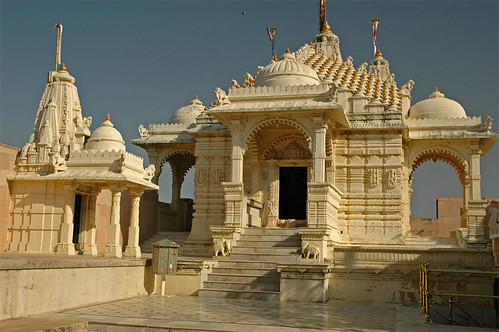The colossal statue of Gomateshwara or Bahubali is situated at Shravanabelagola, the ancient religious town in Hassan district of Karnataka, 158 km away from Bangalore. This gigantic statue of lord Bahubali, carved out of a single block of granite standing majestically on top of a hill, is the tallest monolithic statue in the world. It is 17 m/55 ft (approximately) high and is visible from a distance of 30 km. It was built in the 10th century AD by Chavundaraya, a minister of the Ganga King Rachmalla (975-986 AD).
Set amid two hills and aqua green lakes, Shravanabelagola is a Jain religious centre with an unbroken tradition from the 3rd century AD. The neighbouring areas have Jain settlements and several statues of Jain Tirthankaras. Visitors can have a beautiful view of the surrounding areas from the top of the hill.
Gomateshwara, also known as Bahubali, was the second of the one hundred sons of the first Jain Tirthankara, Lord Rishabha, who was the king of Podanpur. Hundreds of thousands of pilgrims and tourists from all over the world visit the statue once in 12 years for Mahamastakabhisheka rituals.
According to legends, envious of the prosperity, power and fame of Bahubali, his elder brother Bharat wanted to conquer his kingdom. As war would destroy both the kingdoms, the ministers of both sides began negotiations and decided upon a personal fight between the brothers to settle the matter. The last part of the fight was to be fought by hitting the opponent’s head with fists. Bharat, taking the first blow, knocked Bahubali almost to the ground. The next turn was that of Bahubali who was known for the strength of his arm capable of killing Bharat with a single blow. But realizing that fighting his elder brother for material gains was not righteous, he did not hit him but tore at his own hair. Thus he gave up his kingdom and took up the path of ascetic life and meditation.
According to custom, monks who accept monastic vows must bow to all others who took such vows previously. If Bahubali went to Lord Rishabdev for permission to take monastic vows, he would have to bow down to all his 98 younger brothers, who had renounced worldly life before him. His ego did not permit him do that, and hence could not attain the supreme knowledge.
On understanding about his folly, his sisters approached him and prayed to give up his pride and ego. As Bahubali realized his mistake and shed his pride and ego, he attained divine knowledge, truth and enlightenment. After this, Bahubali went to his father who welcomed him and Bahubali began preaching and showing people the right path.




